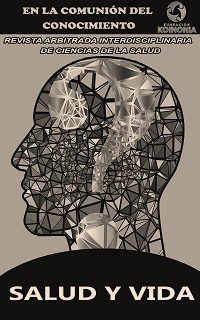Handbook for nurses new to the intensive care unit
DOI:
https://doi.org/10.35381/s.v.v7i1.3587Keywords:
Intensive care units, self-care units, nursing stations, (Source: DeCS)Abstract
Objective: To analyze the knowledge of nursing personnel recently admitted to the intensive care unit. Methods: Descriptive observational study. Results: 85.7% of the personnel surveyed agreed that the management of patients in the unit should be standardized, while 14.3% indicated that this was not necessary. Conclusion: A healthy work environment, good communication with the multidisciplinary team and working in favorable environments are some factors that reduce stress and the risk of producing an adverse event; there are instruments that assess the nursing workload and allow us to know the characteristics of the patients and the care needs of each one of them. In addition, it assesses nursing interventions related to patient severity and care activities.
Downloads
References
Connor JA, LaGrasta C, Cerrato B, et al. Measuring Acuity and Pediatric Critical Care Nursing Workload by Using ICU CAMEO III. Am J Crit Care. 2022;31(2):119-126. https://doi.org/10.4037/ajcc2022907
Connor JA, LaGrasta C, Hickey PA. Refinement of the Intensive Care Unit Complexity Assessment and Monitoring to Ensure Optimal Outcomes III Acuity Tool. Dimens Crit Care Nurs. 2022;41(3):144-150. https://doi.org/10.1097/DCC.0000000000000523
Amatangelo MP, Thomas SB. Priority Nursing Interventions Caring for the Stroke Patient. Crit Care Nurs Clin North Am. 2020;32(1):67-84. https://doi.org/10.1016/j.cnc.2019.11.005
Connor JA, LaGrasta C, Gauvreau K, Porter C, Hickey PA. Validation of the Complexity Assessment and Monitoring to Ensure Optimal Outcomes (CAMEO II) Acuity Tool for Pediatric Critical Care Nursing. Dimens Crit Care Nurs. 2019;38(3):153-159. https://doi.org/10.1097/DCC.0000000000000355
Bravetti C, Cocchieri A, D'Agostino F, Vellone E, Alvaro R, Zega M. Definizione e variabili costituenti la complessità assistenziale infermieristica. Una revisione della letteratura [Definition and variables of complexity of nursing care: a literature review]. Ig Sanita Pubbl. 2016;72(3):233-248.
Warren C, Medei MK, Wood B, Schutte D. A Nurse-Driven Oral Care Protocol to Reduce Hospital-Acquired Pneumonia. Am J Nurs. 2019;119(2):44-51. https://doi.org/10.1097/01.NAJ.0000553204.21342.01
Blot S, Ruppé E, Harbarth S, et al. Healthcare-associated infections in adult intensive care unit patients: Changes in epidemiology, diagnosis, prevention and contributions of new technologies. Intensive Crit Care Nurs. 2022;70:103227. https://doi.org/10.1016/j.iccn.2022.103227
Tayyib N, Coyer F, Lewis PA. Implementing a pressure ulcer prevention bundle in an adult intensive care. Intensive Crit Care Nurs. 2016;37:27-36. https://doi.org/10.1016/j.iccn.2016.04.005
Rivera J, Donohoe E, Deady-Rooney M, Douglas M, Samaniego N. Implementing a Pressure Injury Prevention Bundle to Decrease Hospital-Acquired Pressure Injuries in an Adult Critical Care Unit: An Evidence-Based, Pilot Initiative. Wound Manag Prev. 2020;66(10):20-28.
Shankar A, Gurumurthy G, Sridharan L, et al. A Clinical Update on Vasoactive Medication in the Management of Cardiogenic Shock. Clin Med Insights Cardiol. 2022;16:11795468221075064. https://doi.org/10.1177/11795468221075064
Jentzer JC, Hollenberg SM. Vasopressor and Inotrope Therapy in Cardiac Critical Care. J Intensive Care Med. 2021;36(8):843-856. https://doi.org/10.1177/0885066620917630
Burgunder L, Heyrend C, Olson J, et al. Medication and Fluid Management of Pediatric Sepsis and Septic Shock. Paediatr Drugs. 2022;24(3):193-205. https://doi.org/10.1007/s40272-022-00497-z
Preiser JC, Arabi YM, Berger MM, et al. A guide to enteral nutrition in intensive care units: 10 expert tips for the daily practice. Crit Care. 2021;25(1):424. https://doi.org/10.1186/s13054-021-03847-4
Akella P, Voigt LP, Chawla S. To Wean or Not to Wean: A Practical Patient Focused Guide to Ventilator Weaning. J Intensive Care Med. 2022;37(11):1417-1425. https://doi.org/10.1177/08850666221095436
De Laet IE, Malbrain MLNG, De Waele JJ. A Clinician's Guide to Management of Intra-abdominal Hypertension and Abdominal Compartment Syndrome in Critically Ill Patients. Crit Care. 2020;24(1):97. https://doi.org/10.1186/s13054-020-2782-1
Published
How to Cite
Issue
Section
License
Copyright (c) 2023 Tania Paola Coello-Paladines, Elsa Josefina Albornoz-Zamora, Raúl González-Salas, Lupita Melania Armijos-Campoverde

This work is licensed under a Creative Commons Attribution-NonCommercial-ShareAlike 4.0 International License.
CC BY-NC-SA : Esta licencia permite a los reutilizadores distribuir, remezclar, adaptar y construir sobre el material en cualquier medio o formato solo con fines no comerciales, y solo siempre y cuando se dé la atribución al creador. Si remezcla, adapta o construye sobre el material, debe licenciar el material modificado bajo términos idénticos.
OAI-PMH: https://fundacionkoinonia.com.ve/ojs/index.php/saludyvida/oai.









